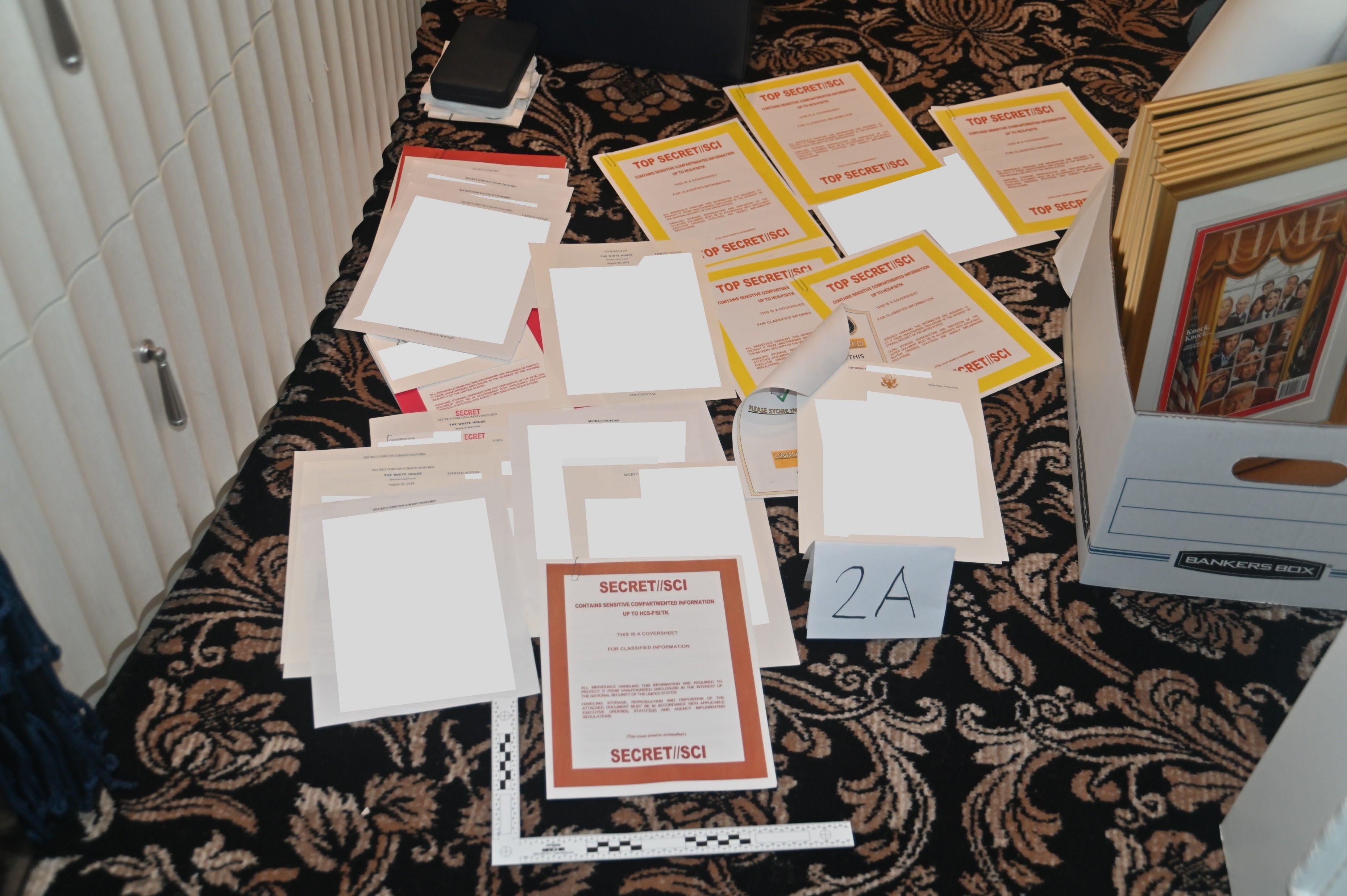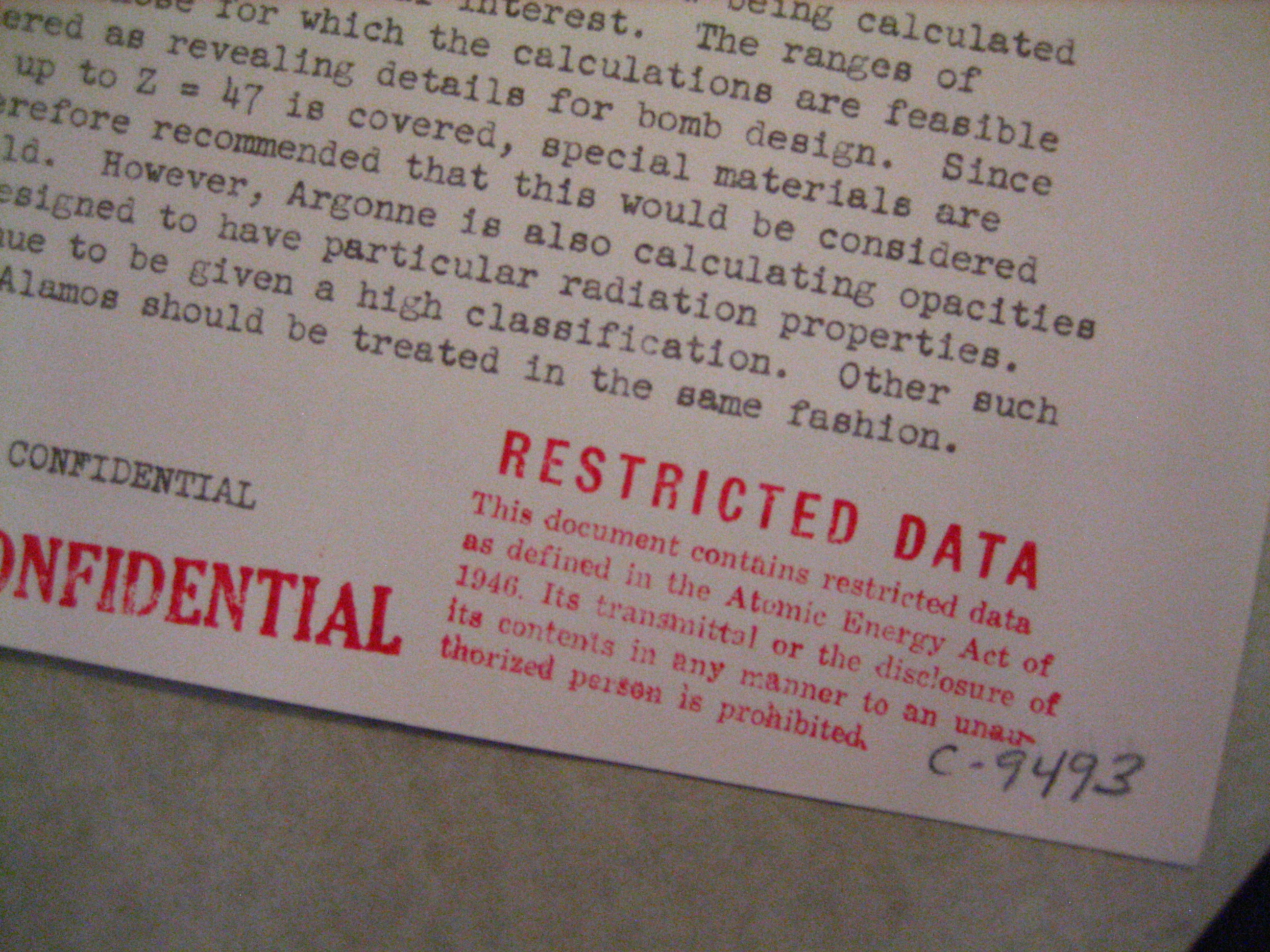|
CNWDI
{{Short description, Category of U.S. top secret classified data Critical Nuclear Weapon Design Information (CNWDI, often pronounced ''SIN-widdy'' or ''SIN-wuh-dee'') is a U.S. Department of Defense (DoD) category of Top Secret Restricted Data or Secret Restricted Data that reveals the theory of operation or design of the components of a thermonuclear or fission bomb, warhead, demolition munition, or test device. Specifically excluded is information concerning arming, fuzing, and firing systems; limited life components; and total contained quantities of fissionable, fusionable, and high explosive materials by type. Among these excluded items are the components that DoD personnel set, maintain, operate, test or replace. The sensitivity of DoD CNWDI is such that access is granted to the absolute minimum number of employees who require it for the accomplishment of assigned responsibilities on a classified contract. Because of the importance of such information, special requirements h ... [...More Info...] [...Related Items...] OR: [Wikipedia] [Google] [Baidu] |
Q Clearance
Q clearance or Q access authorization is the U.S. Department of Energy (DOE) security clearance required to access Top Secret Restricted Data, Formerly Restricted Data, and National Security Information, as well as Secret Restricted Data. Restricted Data (RD) is defined in the Atomic Energy Act of 1954 and covers nuclear weapons and related materials. The lower-level L clearance is sufficient for access to Secret Formerly Restricted Data (FRD) and National Security Information, as well as Confidential Restricted Data, Formerly Restricted Data, and National Security Information. Access to Restricted Data is only granted on a need-to-know basis to personnel with appropriate clearances. A Q Clearance is equivalent to a U.S. Department of Defense Top Secret clearance. "...the Q access authorization corresponds to the background investigation and administrative determination similar to what is completed by other agencies for a Top Secret National Security Information access clearance. ... [...More Info...] [...Related Items...] OR: [Wikipedia] [Google] [Baidu] |
Classified Information In The United States
The United States government classification system is established under Executive Order 13526, the latest in a long series of executive orders on the topic beginning in 1951. Issued by President Barack Obama in 2009, Executive Order 13526 replaced earlier executive orders on the topic and modified the regulations codified to 32 C.F.R. 2001. It lays out the system of classification, declassification, and handling of national security information generated by the U.S. government and its employees and contractors, as well as information received from other governments. The desired degree of secrecy about such information is known as its sensitivity. Sensitivity is based upon a calculation of the damage to national security that the release of the information would cause. The United States has three levels of classification: Confidential, Secret, and Top Secret. Each level of classification indicates an increasing degree of sensitivity. Thus, if one holds a Top Secret security cle ... [...More Info...] [...Related Items...] OR: [Wikipedia] [Google] [Baidu] |
United States Government Secrecy
The United States government classification system is established under Executive Order 13526, the latest in a long series of executive orders on the topic beginning in 1951. Issued by President Barack Obama in 2009, Executive Order 13526 replaced earlier executive orders on the topic and modified the regulations codified to 32 C.F.R. 2001. It lays out the system of classification, declassification, and handling of national security information generated by the U.S. government and its employees and contractors, as well as information received from other governments. The desired degree of secrecy about such information is known as its sensitivity. Sensitivity is based upon a calculation of the damage to national security that the release of the information would cause. The United States has three levels of classification: Confidential, Secret, and Top Secret. Each level of classification indicates an increasing degree of sensitivity. Thus, if one holds a Top Secret security clear ... [...More Info...] [...Related Items...] OR: [Wikipedia] [Google] [Baidu] |
Restricted Data
Restricted Data (RD) is a category of proscribed information, per National Industrial Security Program Operating Manual (NISPOM). Specifically, it is defined by the Atomic Energy Act of 1954 as: :''all data concerning (1) design, manufacture, or utilization of atomic weapons; (2) the production of special nuclear material; or (3) the use of special nuclear material in the production of energy, but shall not include data declassified or removed from the Restricted Data category pursuant to section 142 f the Act''Atomic Energy Act of 1954 Chapter 2, Section 11(y). The concept was initially introduced, with similar wording, in the Atomic Energy Act of 194 ... [...More Info...] [...Related Items...] OR: [Wikipedia] [Google] [Baidu] |
Formerly Restricted Data
Restricted Data (RD) is a category of proscribed information, per National Industrial Security Program Operating Manual (NISPOM). Specifically, it is defined by the Atomic Energy Act of 1954 as: :''all data concerning (1) design, manufacture, or utilization of atomic weapons; (2) the production of special nuclear material; or (3) the use of special nuclear material in the production of energy, but shall not include data declassified or removed from the Restricted Data category pursuant to section 142 f the Act''Atomic Energy Act of 1954 Chapter 2, Section 11(y). The concept was initially introduced, with similar wording, in the |
Classified Information
Classified information is material that a government body deems to be sensitive information that must be protected. Access is restricted by law or regulation to particular groups of people with the necessary security clearance and need to know, and mishandling of the material can incur criminal penalties. A formal security clearance is required to view or handle classified material. The clearance process requires a satisfactory background investigation. Documents and other information must be properly marked "by the author" with one of several (hierarchical) levels of sensitivity—e.g. restricted, confidential, secret, and top secret. The choice of level is based on an impact assessment; governments have their own criteria, including how to determine the classification of an information asset and rules on how to protect information classified at each level. This process often includes security clearances for personnel handling the information. Some corporations and non-governm ... [...More Info...] [...Related Items...] OR: [Wikipedia] [Google] [Baidu] |
Nuclear Weapon Design
Nuclear weapon designs are physical, chemical, and engineering arrangements that cause the physics package of a nuclear weapon to detonate. There are three existing basic design types: * pure fission weapons, the simplest and least technically demanding, were the first nuclear weapons built and have so far been the only type ever used in warfare (by the United States on Empire of Japan, Japan during World War II, WWII). * boosted fission weapons increase yield beyond that of the implosion design by using small quantities of fusion fuel to enhance the fission chain reaction. Boosting can more than double the weapon's fission energy yield. * thermonuclear weapon, staged thermonuclear weapons are essentially arrangements of two or more "stages", most usually two. The first stage is normally a boosted fission weapon as above (except for the earliest thermonuclear weapons, which used a pure fission weapon instead). Its detonation causes it to shine intensely with x-radiation, which ... [...More Info...] [...Related Items...] OR: [Wikipedia] [Google] [Baidu] |
Nuclear Weapon
A nuclear weapon is an explosive device that derives its destructive force from nuclear reactions, either fission (fission bomb) or a combination of fission and fusion reactions ( thermonuclear bomb), producing a nuclear explosion. Both bomb types release large quantities of energy from relatively small amounts of matter. The first test of a fission ("atomic") bomb released an amount of energy approximately equal to . The first thermonuclear ("hydrogen") bomb test released energy approximately equal to . Nuclear bombs have had yields between 10 tons TNT (the W54) and 50 megatons for the Tsar Bomba (see TNT equivalent). A thermonuclear weapon weighing as little as can release energy equal to more than . A nuclear device no larger than a conventional bomb can devastate an entire city by blast, fire, and radiation. Since they are weapons of mass destruction, the proliferation of nuclear weapons is a focus of international relations policy. Nuclear weapons have been d ... [...More Info...] [...Related Items...] OR: [Wikipedia] [Google] [Baidu] |
Nuclear Secrecy
*
*
{{Disam ...
Nuclear may refer to: Physics Relating to the nucleus of the atom: * Nuclear engineering *Nuclear physics *Nuclear power *Nuclear reactor *Nuclear weapon *Nuclear medicine *Radiation therapy *Nuclear warfare Mathematics *Nuclear space *Nuclear operator *Nuclear congruence *Nuclear C*-algebra Biology Relating to the nucleus of the cell: * Nuclear DNA Society *Nuclear family, a family consisting of a pair of adults and their children Music * "Nuclear" (band), group music. * "Nuclear" (Ryan Adams song), 2002 *"Nuclear", a song by Mike Oldfield from his ''Man on the Rocks'' album * ''Nu.Clear'' (EP) by South Korean girl group CLC See also *Nucleus (other) *Nucleolus *Nucleation *Nucleic acid *Nucular ''Nucular'' is a common, proscribed pronunciation of the word "nuclear". It is a rough phonetic spelling of . The ''Oxford English Dictionary''s entry dates the word's first published appearance to 1943. Dictionary notes This is one of two con ... [...More Info...] [...Related Items...] OR: [Wikipedia] [Google] [Baidu] |




.jpg)
